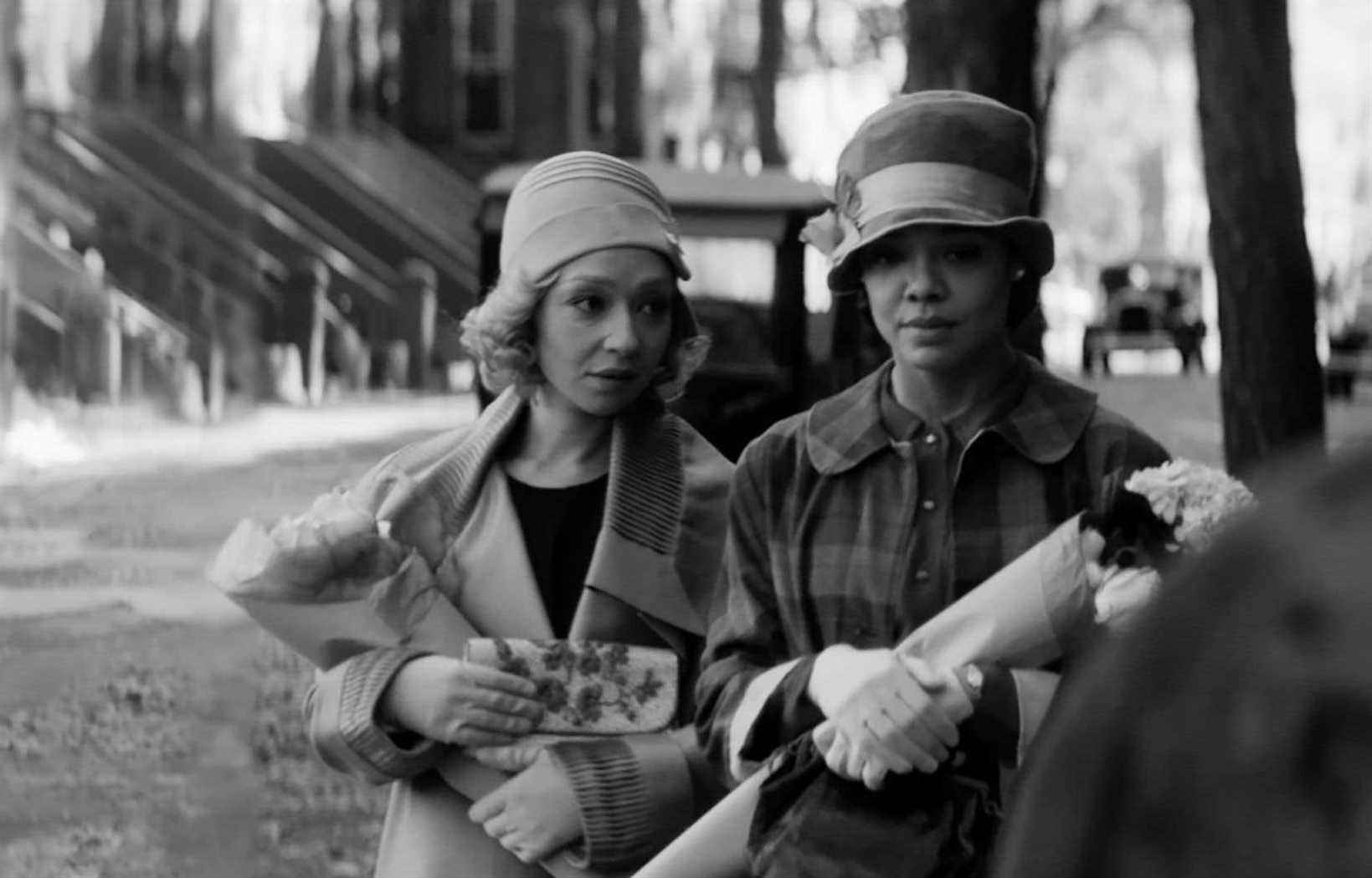The film Passing (Chiaroscuro) marks the promising debut of actress Rebecca Hall as a director. We follow, in the New York of the 1920s, against a backdrop of jazz and the Harlem Renaissance, the linked destinies of two African-American women who have the peculiarity that their fair skin allows them to pass for white – hence the title “ passing “, An expression that used to designate such cases. Published in 1929, Nella Larsen’s original novel made a deep impression on the filmmaker and screenwriter, who read it when she had just learned that her maternal grandfather had once passed himself off as white in order to escape the prevailing racism.
Passing paints two fascinating portraits, but embraces a single perspective, that of Irene. Unlike Clare, her childhood friend, Irene lives in Harlem and identifies as black, rarely posing as white, “when it’s more convenient,” she says, as when she has to. venture outside the safe limits of the neighborhood. Involved in her community, Irene married Brian, a black doctor with whom she had two boys.
Clare, she returns to New York after living in Chicago. She displays dazzling confidence, just like her platinum blonde hair. Mother of a little girl, she is married to John, a banker as rich as he is racist. During the reunion sequence between the two young women, Clare’s pragmatism in the face of her precarious situation (she plays her life and knows it) is devastating. So much money justifies her hiding such a part of herself, she argues.
However, in his eyes, there is a glimmer of doubt. And in fact, Clare confides in Irene in the following days that she envies her life “simpler, freer and safer”. The second nods, but seems unconvinced. Later, Irene wonders aloud if everyone isn’t, basically, masquerading as someone else. This is his case.
Double dichotomy
In fact, Irene may well assume her skin color, her life “simpler, freer and safer” is based on a lie just like that of Clare. A simulacrum which becomes apparent in a gaze which lingers, or which, conversely, flees. It is a host of emotions, shameful at the time, that Irene represses.
This second aspect, Rebecca Hall approaches it in an allusive rather than frontal way, in phase with the reserved nature of Irene. On two or three occasions, Irene dodges her husband’s advances, and the performers give these moments a customary character. It is only at the end of meetings with Clare that Irene has gestures of intimacy towards Brian, as if to satiate by proxy what could not be consumed with her friend.
Thus the film offers two variations of the dichotomy between what we are and what we claim to be: one internal, with Irene, and the other external, with Clare. The two stars perfectly embody this dynamic: Tessa Thompson opts for an interiority where the rare shards take on the value of a storm, while Ruth Negga, in complementarity, plays with apparent extraversion and underlying pain.
Each has its prison (using the narrower 1.33: 1 aspect ratio makes sense), and each has its motivations. In this regard, Rebecca Hall never judges her heroines. Including when she presents them in an unfavorable light, for example by showing Irene’s haughty attitude towards her servant Zu. You can be the victim of injustices and perpetuate injustices yourself: nothing is simple, suggests the film, which consequently rejects any simplicity.
The camera gaze
The subtext is for the account incredibly rich – racism, homophobia, feminism, class – without the approach showing any didacticism whatsoever. With finesse, Rebecca Hall uses dialogue to express more than what is said, evoking one thing to better designate another.
The best example of this bias comes in mid-season, during a ball in Harlem where Clare insists on accompanying Irene in hiding from John. When a white friend (who shares a taste for black men with his wife) asks Irene if she finds such a dancer attractive, she says no. She sees in it, she explains, an attraction for the exotic on the part of “white tourists”, a mixture of “fascination and repulsion” …
At these words, Rebecca Hall shifts her focus from dancer to Clare, indicating that it is actually her that Irene is talking about. Moreover, if her staging attests to a very clear vision, the director is never as inspired as when her camera takes the place of Irene’s gaze.
Tellingly, there is no spring in this film which begins in summer, continues in autumn, and ends in winter. Filmed in an occasional black and white, but a vaporous, elegiac black and white, Passing A dull tension exudes that grows as Irene and Clare are overtaken by their respective cover-ups, by their respective dissatisfactions.
We come out of the experience shaken and thoughtful, but above all, impatient to discover the next realization of Rebecca Hall.
